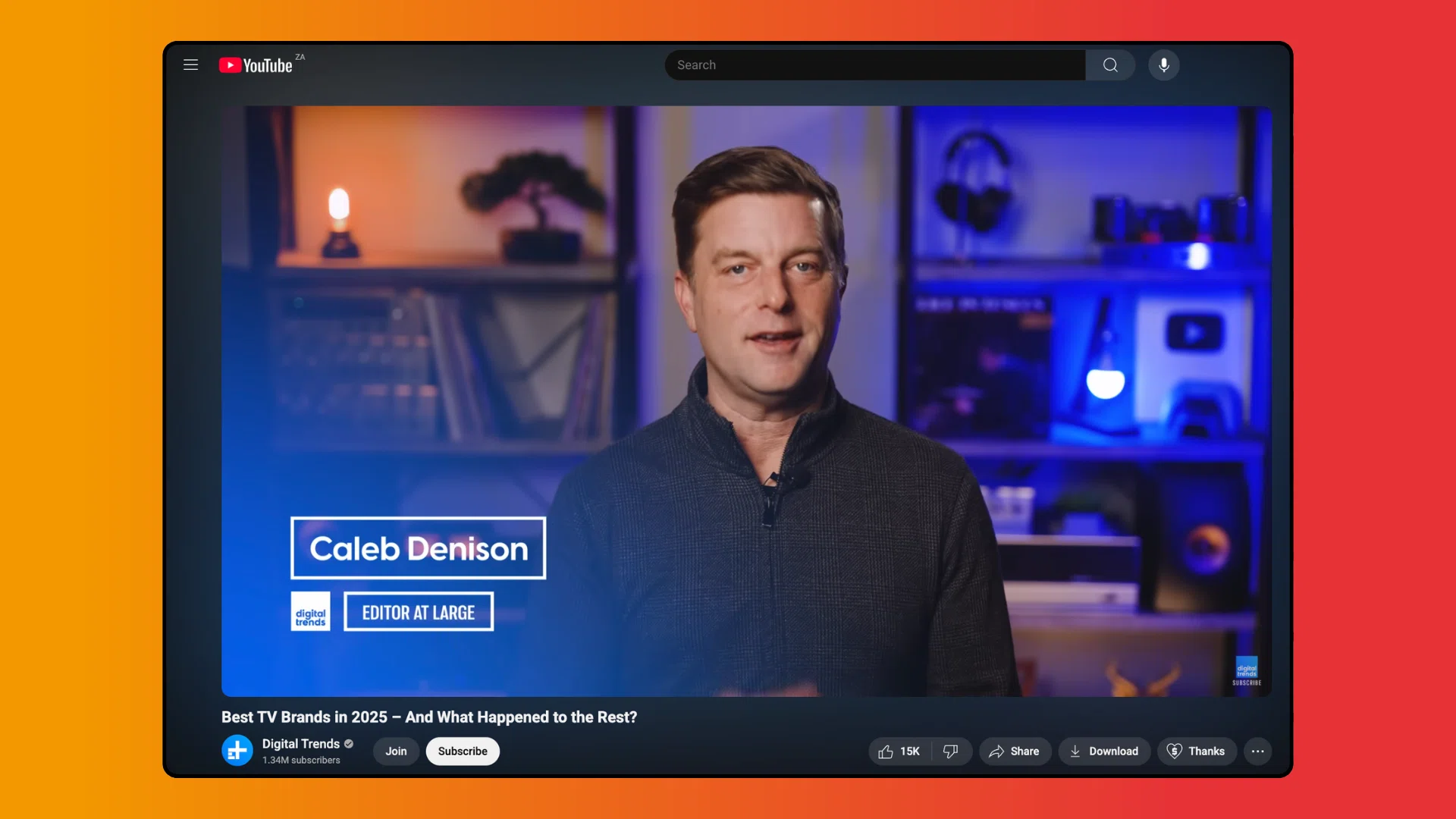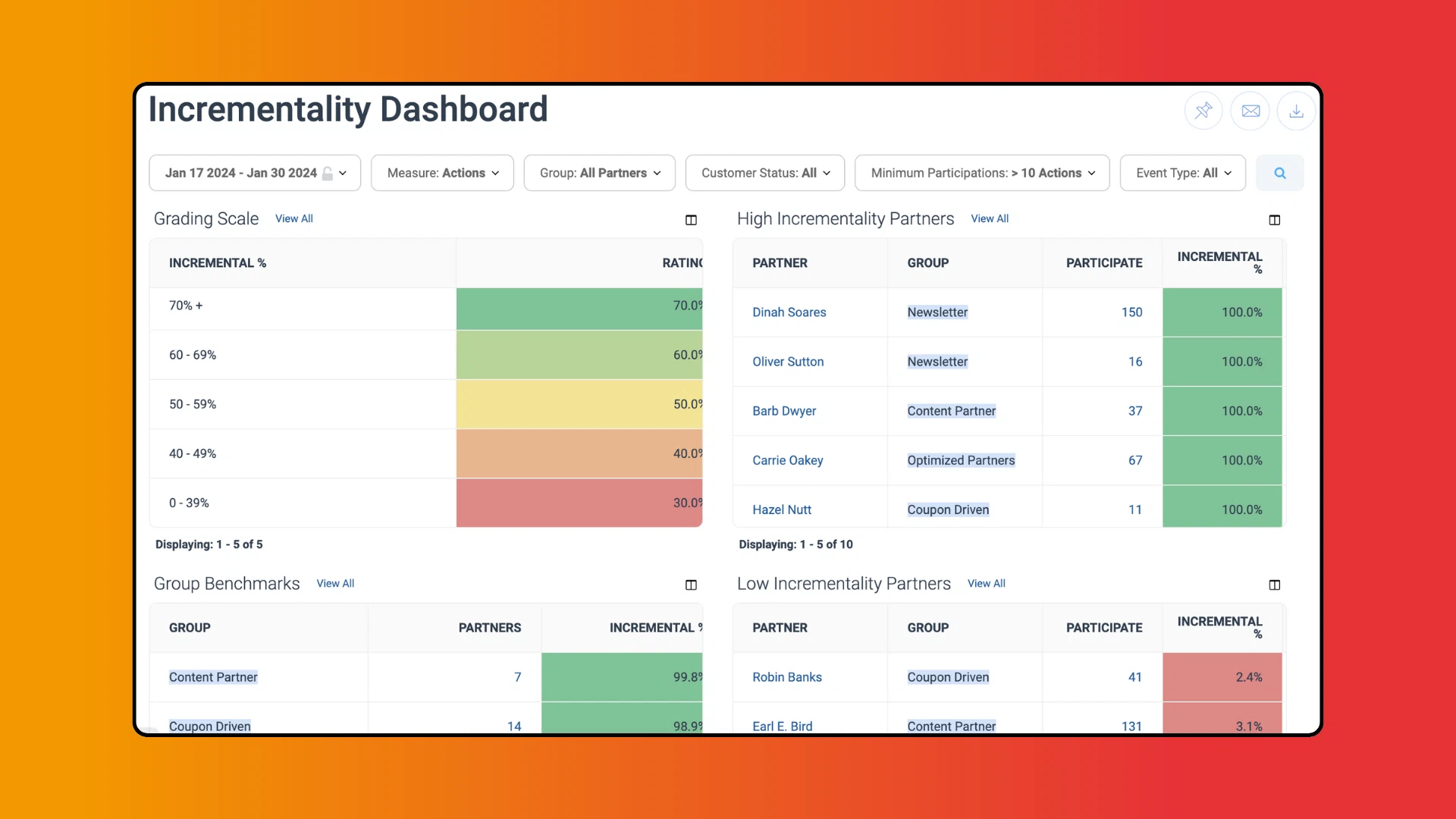Think your partner program’s underperforming? The problem might be your performance marketing attribution.
Last-click attribution credits whoever shows up at the end, while ignoring the partners who started the entire customer journey. Over 80% of retail dollars are spent in-store, while 22.8% of customers research five or more times before buying. That’s a lot of influence you’re not measuring.
The cost? Misallocated budgets, undervalued partners, and campaigns that get cut before their real impact shows up.
This guide shows you how to fix it with multi-touch attribution that connects spend to actual performance across the entire funnel.
Why traditional attribution models fail modern marketers
Legacy attribution models weren’t built for the complexity of modern customer journeys. As discovery, research, and purchase behaviors shift across devices and platforms, these old frameworks fail to reflect how real people buy. This leads to flawed reporting, misallocated budgets, and undervalued marketing touchpoints.
Last-click attribution is limiting
Last-click attribution gives full credit to the final touchpoint before a conversion but ignores every interaction that came before it. This creates a distorted view of what’s actually driving performance.

Comparison platforms like WeddingWire shape decisions but are missed in last-click attribution.
This is a classic example of single-touch attribution models, which oversimplify multi-stage decision-making. Even linear attribution models, while more balanced, still fall short without deeper funnel visibility.
Customers rarely convert after a single click. Throughout the decision-making process, they interact with social content, influencer posts, branded emails, and affiliate links. When credit is given only to the final touchpoint, last-click models overlook the early and mid-funnel efforts that play a critical role in setting up the sale.
These outdated models don’t support a modern marketing strategy where influence happens across multiple touchpoints.
That’s why forward-thinking marketers are moving away from single-touch attribution entirely. A more accurate model allows you to see which marketing touchpoints drive awareness, influence decisions, and lead to conversions. This gives your team the insights it needs to optimize spend across the full customer journey.
Data sources are too fragmented
Most marketers still manage siloed data from Google Ads, Meta, affiliate platforms, Google Analytics, and internal analytics tools. Traditional reporting systems often fail to connect these dots, leaving teams with a disconnected view of what is actually influencing performance across the funnel.
This fragmentation leads to gaps in evaluating cross-channel campaigns and weakens your overall marketing strategy. Without connected systems, there’s no cohesive process for turning performance data into action.
And without proper integration, it becomes difficult to understand how marketing channels interact or to measure the true contribution of each touchpoint. For many, the solution starts with re-evaluating their multi-channel attribution approach and adopting systems that can unify insights across platforms.
This kind of cross-functional discussion helps teams align on what’s truly driving results and lays the groundwork for attribution models that reflect actual performance.
Consumer behavior is evolving
Today’s buyers rarely follow a linear funnel. Think about someone buying a premium home theater system. They could begin by watching unboxing videos on YouTube, visiting a showroom to experience the sound quality, reading reviews on tech forums, and then making the purchase online or in-store. Understanding modern customer journeys like these is essential to building a reliable attribution model.

Example: Digital Trends offers trusted reviews, helping consumers choose the best tech products.
A recent impact.com and eMarketer survey found that 22.8 percent of shoppers research five or more times before buying. Over 60 percent buy newly discovered products, but rarely on the first click.
These patterns reveal why it’s essential to map your campaigns across every stage of the journey, from early awareness through to conversion. Attribution based on rigid funnel assumptions limits your ability to adjust your strategy to how people actually behave.
Attribution models need to reflect this complexity to accurately measure what’s working.
Privacy regulations are becoming stricter
With the deprecation of third-party cookies and stricter regulations like GDPR and CCPA, traditional tracking methods are collapsing. Brands are now under pressure to shift toward first-party data and rethink how attribution works in a privacy-first environment.
These changes require teams to evolve their processes to stay compliant while still capturing valuable performance insights.
This has major implications for performance marketing attribution. Without third-party signals to connect customer interactions, marketers need to build strategies rooted in consent, transparency, and direct engagement. That means finding new ways to connect touchpoints, track conversions, and analyze insights without compromising user trust.
The evolution of partnership attribution—from last-click to multi-touch
Attribution has always needed to reflect the unique dynamics of each channel, especially with affiliate marketing. As the channel evolved, it became apparent that older models couldn’t capture the full complexity of partner-driven influence across the customer journey.
The last-click problem: Why the old models fell short
Early affiliate programs relied on last-click attribution, giving full credit to whichever partner drove the final click before a conversion. But as partnerships expanded to include influencers, editorial content, loyalty platforms, and embedded commerce, this narrow model left out critical context and distorted performance insights.
Callie Richards and similar creators spark awareness, influencing the customer funnel.
These tactics don’t operate in silos. They function as interconnected pieces of a broader modern affiliate ecosystem—a layered network of partners, touchpoints, and traffic sources that shape how customers move through the funnel.
- Influencers often spark initial discovery
- Editorial content drives research and validation
- Loyalty programs and deal sites close the sale
“Affiliate is the sum of its parts,” says Crawford. “Calling it a channel and measuring it as one just doesn’t paint a clear picture.” And without that full picture, marketers risk misjudging what’s actually driving conversions, and undervaluing key contributors along the way.
These blind spots expose the limitations of single-touch attribution models, which reward only one moment in a longer decision-making process. If your marketing strategy still treats partnerships like a last-click silo, you’re not seeing how campaigns truly perform.
Multi-touch attribution: A clearer path forward
The shift toward multi-touch attribution gives you a clearer view of how partners influence outcomes. Rather than focusing only on the final click, modern systems capture how different partners shape decisions throughout the entire customer journey, starting with discovery and continuing through to purchase.
The data reveals the true impact of affiliate partnerships:
- Affiliate links appeared in 24 percent of all conversions, often as the only channel involved.
- Only 10 percent of multi-channel conversions credited affiliates with last-click attribution, despite their meaningful contributions
- 27 percent lift in average order value occurred when affiliate touchpoints were part of the customer journey
These findings highlight that affiliate contributions extend well beyond simply closing the deal. By leveraging advanced tools like:
Incrementality testing: Marketers can measure the true impact of affiliate efforts by identifying how much incremental value they add, rather than just attributing conversions that might have occurred anyway. It also identifies which efforts drive incremental revenue versus overlapping influence

With three unique reports, impact.com’s Incrementality Dashboard highlights the incremental value of each partner.
Cross-Channel Performance Insights: These insights provide a holistic view of how affiliates interact with other marketing channels, helping marketers uncover mid-funnel and assistive roles that affiliates play in influencing customer decisions. It also prevents double-counting and ensures accurate attribution.
Together, these tools empower marketers to capture and quantify the broader value of affiliate programs, ensuring their strategies are both data-driven and impactful.
Platforms like impact.com make this possible by bringing together behavioral data, flexible partner crediting, and unified attribution insights. This gives you a clearer picture of what’s truly working across your partnerships.
Adapting attribution to modern partnerships
Affiliate partnerships now include everyone from coupon publishers to influencers and niche content creators, each playing a different role across the marketing funnel. Grouping them under a single model leads to missed insights and inefficient payouts.
Different partners serve different roles—for example:
- Creators build awareness
- Editorial partners guide mid-funnel consideration
- Cashback and coupon sites help drive the final click

Mid-funnel decisions are guided by editorial partners like The Penny Hoarder.
That’s why more brands are looking for attribution systems that adapt, such as tools that can assign credit based on partner type, funnel position, and compensation structure.
This shift is being driven by the demand for greater ROI visibility and data transparency. As you advance your performance marketing attribution maturity, you need systems that reflect how diverse partnerships shape the customer journey, beyond who gets the final click.
If you’re still relying on fixed processes and rigid attribution rules, your campaigns are likely misaligned with how people actually shop. Upgrading your attribution is a strategic move, one that turns your partner program into a key pillar of your marketing strategy.
Why attribution is still a challenge for performance marketers
Even with better tools and smarter strategies, performance marketers still face major attribution obstacles—disparate touchpoints, complex paths to purchase, and new privacy standards. This makes it difficult to truly see what drives results and where partnerships create value.
Tracking customers across multiple devices is harder than it looks
Consider how people shop for sneakers today. A customer might:
- Spot a limited-edition drop on Instagram during their commute,
- Research sizing and reviews on their work computer,
- Compares prices on their tablet that evening
- And finally, purchase the sneaker with their phone the next morning using a saved payment method.
GRWM videos from creators like @john_.sstyl3 capture attention during casual scrolling.
Each interaction happens on a different device, often with different login states and browsing sessions. Without effective cross-device tracking, these key interactions are lost from your attribution model.
Platforms like impact.com address this through profile-based identity resolution that connects user behavior across devices. As Crawford explains, “Even with a click on device A and a conversion on device B, we can, in some cases, know that’s the same person.” This allows for more accurate crediting across the full customer journey, even when it unfolds across multiple screens.
Not every touchpoint gets the credit it deserves
Modern customers rarely convert after a single interaction. Let’s see how a typical flight booking journey unfolds:
- Discovery: Travel influencer’s Instagram post sparks interest in a destination
- Research: Price comparison on Google Flights and airline websites
- Social proof: Reading reviews and recommendations on travel forums
- Nurturing: Email newsletter with destination guide and booking tips
- Conversion: Retargeting ad with a limited-time offer closes the sale

Another research example is Point Hacks who help readers to find flight deals and optimize points.
Each of these marketing touchpoints plays a role in shaping intent, but traditional attribution models rarely recognize that complexity.
Standard attribution models favor the final touchpoint—typically the retargeting ad—while ignoring the travel blog that first inspired the trip or the email that provided valuable planning information. Last-touch models miss mid-funnel impact, shortchanging partners who spark interest or drive consideration before the final sale.
Recognizing this, many performance marketers are exploring multi-touch attribution models and advocate programs to ensure all contributing partners—whether influencers, publishers, or affiliates—receive their proper credit for shaping purchase decisions.
When marketing channels fight for credit
Your performance channels don’t operate in isolation. Retargeting, email, organic search, and affiliate campaigns often engage the same customers within a short window. This overlap can lead to channel collision, where multiple teams compete for credit on the same conversion. Understanding how your channels interact is a core part of effective multi-channel attribution, not a side consideration.
Zenni Optical, for example, discovered $1.5 million in spend overlap across marketing channels from ads shown to users already influenced by other touchpoints. By identifying these redundancies, they were able to reallocate budget toward efforts that brought in net-new customers rather than duplicating existing influence.
Understanding how your channels interact across the full customer journey is critical to improving campaign ROI and making smarter budget decisions. If you’re only looking at last-click performance, you’re likely missing where true impact begins.
Privacy changes are rewriting the rules of tracking
With global regulations tightening and cookies on the way out, traditional tracking methods are no longer reliable. This shift is pushing marketers to adopt first-party data strategies and rethink how they build their marketing attribution models.
As passive tracking becomes less effective, the challenge is creating systems that still provide accurate insights across regions and channels. For brands running global campaigns, the stakes are high. You need a model that respects privacy while still capturing the full customer journey and reflecting meaningful customer interactions.
3 ways partnership programs solve attribution challenges
Attribution is no longer just a matter of tracking clicks and conversions. It now requires a deeper understanding of the full spectrum of customer interactions across channels and touchpoints. As tracking restrictions increase and measurement becomes more fragmented, partnership programs offer a way to:
- Connect the dots
- Gain greater insight into what’s working and where.
1. First-party data is improving attribution accuracy
First-party data is your new best friend. With third-party cookies disappearing and privacy laws getting stricter, first-party data has become our lifeline for accurate attribution.
First-party data tracks customer interactions right within your own ecosystem, including CRM systems, email campaigns, and website activity. Plus, it keeps you compliant with privacy regulations while reducing your dependence on those vanishing third-party cookies.
Partnership programs are perfectly set up to help you collect and use this data effectively. For instance, impact.com tools such as server-to-server tracking and Universal Tracking Tags give you:
- Accurate measurement of customer interactions
- Clear attribution across the entire customer journey
Plug into impact.com’s APIs or JavaScript for precise, dependable tracking
When you focus on first-party data through partnership programs, you maintain measurement accuracy while building genuine trust with your customers. These tools also give you the flexibility to adapt as privacy regulations evolve, ensuring your performance insights stay actionable and reliable.
2. Cross-device tracking connects fragmented journeys
Modern consumers often switch between devices during their purchase journey, making it difficult to track their interactions. Partnership programs address this challenge with advanced cross-device tracking technologies.
Cross-device tracking uses identity resolution to link user behavior across devices. This tool ensures that interactions on different platforms are attributed to the same customer.
Track and analyze multi-device customer journeys with Impact.com’s Cross Device Solutions.
Some partnership platforms take this even further with collaborative solutions like impact.com’s Consortium. Think of it as a secure way to share anonymized traffic signals across participating brands—which helps fill in those visibility gaps we’re always dealing with. You get a much more complete picture of how customers actually move across devices and channels.
This kind of visibility makes a real difference when you’re trying to make smart decisions about where to invest your budget. The advanced tracking solutions also play nicely with your existing tools, so you’re not missing any pieces of the customer journey puzzle.
The result? Better data, smarter optimization, and fewer blind spots in your attribution model.
Partner mapping highlights who drives conversions
Partnership platforms give marketers clearer journey-level insights. With granular reporting capabilities, you can trace when and where a partner influenced a customer’s path to conversion, from first engagement to final purchase.
Kristina Nolan, Vice President of Media at DMi Partners, highlights the importance of journey-level insights:
That level of visibility is exactly what marketers need to evaluate partner contributions without relying on assumptions. The focus isn’t limited to who drove the final click. What matters is understanding how different partners contribute at each stage of the journey.
Building on this foundation of comprehensive data, impact.com’s Optimize suite breaks down exactly where and how each partner influences prospects as they move through your conversion funnel.
- The Contribution Report shows how often each partner acts as an Introducer (first touch), Closer (last touch), or Influencer (any other point in the conversion path).
- The Top Paths Report shows you the most popular conversion paths in your program.
- The Incrementality by Partner Report helps you see how much incremental value partners are contributing to your program

The Contribution Report
These capabilities equip marketers to distinguish between influence and overlap, so they can scale the partnerships that add real value.
Implementation guide: Setting up proper attribution in your partnership program
You can’t measure what you haven’t defined. When attribution is vague or outdated, even high-performing partnerships can slip through the cracks or get misjudged entirely. To get credit where it’s due and uncover what’s really working, you need to set the foundation right from the start.
This section breaks down how to build a smart, scalable attribution system that aligns with your broader marketing strategy.
Start with strategy: Define your goals and success metrics
Before you touch any settings or build any rules, zoom out. What exactly are you trying to achieve, and how will you measure it?
Are you optimizing for customer acquisition cost, boosting return on ad spend, or identifying which influencer collaborations are driving high lifetime value? Your attribution framework should reflect the outcomes that matter to your business, rather than defaulting to last-click credit.
For example:
- If your goal is rapid market penetration, give more credit to top-of-funnel local influencers who drive first-touch awareness.
- If you’re focused on campaign ROI, weigh mid- and lower-funnel activity more heavily to track what actually converts.
- Want to understand your audience demographics by source? Set up rules that map which social media platforms or content localization strategies are bringing in the right customers.
A strong attribution setup starts with clear intent. First, decide what success looks like, and then build your model backwards from there. Every configuration should align with your larger marketing strategy.
Your attribution reality check
Before you touch a single setting, ask yourself these three questions:
- When my CMO asks, “How did we do this quarter?” what metric do they actually care about?
- If I had to bet my bonus on which touchpoints drive that success, where would I place my money?
- How does this attribution approach help me defend my partnership budget next quarter?
Break down silos: Leverage data integrations across your stack
If your data lives in silos, your attribution model will always be incomplete. To build a truly accurate picture of partner performance, connect your partnership platform with the rest of your tech stack, including point-of-sale systems, email platforms, and CRMs.
These integrations let you:
- Attribute revenue across the full lifecycle, not just the first conversion.
- Track repeat purchases, upsells, and re-engagement triggered by partner influence.
- Sync audience data for sharper targeting and smarter partner segmentation.
When your systems are in sync, attribution becomes a strategic engine that drives clear, confident decisions.
Quick audit checklist:
- Partnership platform syncs with your CRM for lifetime value tracking
- Point-of-sale data flows into your attribution model
- Email engagement data connects to partner touchpoint analysis
- Cross-platform audience data enables better partner matching
Missing any of these connections? You’re leaving money on the table by misattributing high-value partnerships.
Customize your model: Multi-touch vs. single-touch attribution
Partner touchpoints vary in influence, and your attribution model should reflect that.
Start by moving beyond single-touch attribution models like last-click or first-click, which oversimplify the path to purchase. Instead, configure multi-touch attribution settings that align with how real customers engage across the funnel. You might use linear attribution models to assign equal value across all touchpoints or apply time-decay models that give more credit to later interactions.
With AI-powered configuration tools, you can adapt weighting based on funnel position. Whether you’re prioritizing early awareness, mid-funnel influence, or final conversion actions, the right model connects tactics to outcomes and guides your team with data-backed clarity.
Matching models to reality
Your customer journey is unique to your business, and your attribution model should be too. Instead of defaulting to what everyone else is doing, think about your actual customer behavior.
Here’s how to choose:
- Go linear when your customer journey involves multiple equally important touchpoints (think B2B with long consideration cycles)
- Try time-decay when recent interactions matter more (like flash sales or limited-time offers)
- Test position-based when both awareness and conversion moments deserve special recognition
Keep it agile: Test, iterate, and refine your attribution model
Attribution models need to be updated regularly. As customer behavior changes, new channels emerge, or regulations shift, your model can quickly become outdated. A model that worked six months ago might already be outdated. That’s why optimization must be ongoing.
Run controlled experiments to test different weightings and models. Use channel-level reporting to analyze how each partner contributes across the funnel. Identify anomalies or under-attributed partners that might signal hidden value.
Set a cadence for quarterly attribution reviews. This gives you space to refine your assumptions, update data sources, and apply learnings from past campaigns.
Attribution should be a living part of your marketing strategy, supporting your ability to adapt, allocate resources more effectively, and scale what works.
Your quarterly attribution review checklist:
- Compare attribution model results against actual revenue outcomes
- Test alternative weighting scenarios on past campaign data
- Identify partners showing attribution anomalies (over or under-credited)
- Update channel coefficients based on recent performance data
- Document changes and establish baseline metrics for next quarter
ROI impact: How improved attribution affects budget decisions
Better attribution reshapes budget strategy by connecting spending to performance. With full-funnel insights, teams can uncover undervalued partners, rebalance spending across channels, and make investment decisions based on real contributions instead of assumptions.
Uncover hidden value with data-backed budget optimization
Multi-touch attribution highlights which partners are actually driving value, even if they aren’t closing the final conversion. Affiliates and influencers that seemed low-impact in a last-click model often emerge as critical early or mid-funnel contributors.
With reliable data, you can confidently reallocate spend toward what delivers results and reduce investment in what doesn’t.
Connect marketing spend to impact
CMOs gain confidence knowing that spend is aligned with results. With a proper attribution framework in place, leadership can connect each dollar invested to specific actions or revenue outcomes, instead of vague impressions or unverified assumptions. As Crawford explains, “We only incur costs when we have revenue or an action that we value… whereas all the other [media] channels, you pay regardless.”
This performance-tied cost structure creates a lower-risk, higher-return profile than traditional paid media and gives you a clearer picture of what’s working.
Forecast confidently with transparent performance insights
Accurate attribution turns your marketing function into a predictable growth engine. Once you see how each partner contributes across stages like awareness, consideration, and conversion, your budgeting decisions become grounded in evidence.
You can project results more confidently, set clear performance targets, and allocate budget based on real contribution instead of speculation. With fewer blind spots in your attribution process, your marketing campaigns become easier to defend and more effective to scale. Better forecasting leads to better strategy, and that’s how high-performing teams stay ahead.
FAQ: performance marketing attribution
Affiliate marketing attribution is the process of assigning credit for a conversion to the specific affiliate or set of affiliates that influenced a customer’s decision. This ensures partners are rewarded fairly based on their actual impact across the customer journey.
Without accurate attribution, you risk undervaluing key partners or misallocating spend. A strong attribution framework lets you understand which affiliates drive awareness, consideration, or final purchases, helping you optimize performance and ROI.
Common models include last-click, first-click, linear (equal credit), time-decay (more credit to later touchpoints), and position-based models. Each has trade-offs. Multi-touch models often give a more realistic picture of how affiliates contribute across the funnel.
Look for cross-device tracking, first-party data capabilities, flexible attribution rules, and integrations with your tech stack. The best providers also offer transparency in partner reporting and compliance with privacy regulations like GDPR and CCPA.
These are platforms or systems that track customer interactions across marketing channels and assign credit for conversions. They help marketers see what’s working, optimize spend, and tie marketing activity directly to business outcomes.
It provides the data you need to make confident decisions. Without it, you’re guessing which efforts drive growth. Attribution software surfaces what’s actually influencing outcomes, helping you allocate budget strategically and scale effective campaigns.
Connect spend to what actually works
Attribution shapes every budget call, campaign plan, and partner decision. If the model’s wrong, the strategy that follows falls apart.
Partnership marketing needs systems that reflect how people actually buy. Multi-touch tools, first-party tracking, and flexible credit models give you a real look at what drives outcomes. No more inflating one touchpoint or ignoring the rest.
The brands that win are the ones that track with precision, value influence across the journey, and cut what doesn’t perform. Accurate attribution drives growth. It shows what works and where to invest.
Ready to get your numbers right?
Explore how impact.com can transform your partnership strategy and unlock your marketing potential. Get started today.
Dive deeper into smarter attribution with these must-read resources:
- The modern customer journey | research report
- The incrementality playbook | research report
- What is multi-channel attribution| blog post
- 6 attribution models for better customer journey insights | blog post
- Gain deeper perspective of partnership performance | one-sheet






